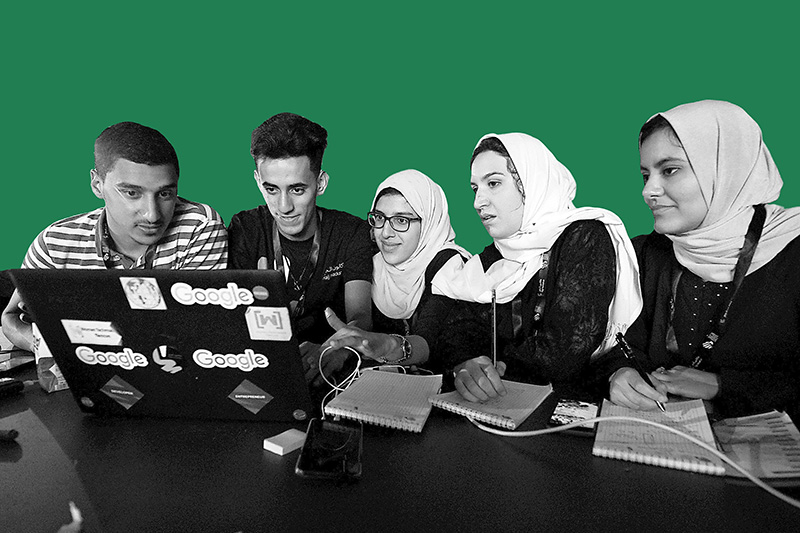为确保朝觐者安全,沙特举办了“黑客马拉松”

|
很多人将硅谷比作科技界的圣城麦加,然而鲜为人知的是,在伊斯兰教的圣地麦加也有一个 “小硅谷”。今年8月,麦加将迎来200多万名朝圣的游客(只要经济和身体条件允许,每个穆斯林一生都至少要来麦加朝觐一次,而全球至少有18亿穆斯林)。对于沙特政府来说,要确保这些朝圣者的安全,可并不是一件容易的事情。2015年,麦加曾经发生过一起朝觐者踩踏事件,造成2000余名朝觐者丧生。 在此次事故之后,为了确保来自于160多个国家的游客的安全和舒适,沙特政府在生物识别和区块链等领域投入了数十亿美元。去年,沙特还举办了首届“麦加朝圣黑客马拉松”,程序员和创业者们要在36个小时里,开发能够简化朝觐流程的应用和服务。这次比赛的获奖者是一支来自于沙特的团队,其成员全部为女性。她们设计了一款智能手机应用程序,可以帮助不会说阿拉伯语的人在没有互联网连接的情况下翻译道路指示牌。这支团队最后获得了50万美元的奖金,用于购买她们15%的股权。 今年,沙特政府朝觐部还在试点推广一个智能卡项目,大约2.5万名朝圣者将使用该智能卡存储他们的身份、医疗和联系信息,并允许智能卡追踪他们的位置。通过对相关地理位置数据进行建模,沙特有关部门便可以更好地预测人群的移动,以避免再次发生致命的踩踏事件。 目前,由于沙特政府对朝觐者的人数做了限制,要想让在世的每个穆斯林有生之年都去麦加朝觐一次,得花上580多年。不过沙特政府希望到2030年前,将麦加的接待能力提高到年均3000万名游客。要想实现这一雄心勃勃的计划,在科技上进行投资是很有必要的。(财富中文网) 本文另一版本登载于《财富》杂志2019年8月刊,标题为《现代朝觐者》。 译者:朴成奎 |
It’s often said that Silicon Valley is a tech Mecca, but the actual Islamic holy site has technology chops of its own. More than 2 million Muslims will visit the Saudi Arabian city in August to perform the Hajj pilgrimage—a journey every one of Islam’s 1.8 billion adherents must make during their lifetime, if financially and physically able. Keeping those people safe is no small task for the kingdom’s government: In 2015, more than 2,000 pilgrims were killed in a stampede in Mecca’s Mina neighborhood. Since then, the Saudi government has invested billions in everything from biometrics to blockchain to keep visitors from more than 160 countries safe and comfortable during their visit. Last year, Saudi Arabia hosted its first “Hajj Hackathon”—with coders and entrepreneurs competing over a 36-hour period to build apps and services to streamline the pilgrimage. The winners were an all-female Saudi team who designed a smartphone app to help non-Arabic speakers translate signage without an Internet connection. They received $500,000 in exchange for a 15% equity stake. This year, the Ministry of Hajj and Umrah is piloting a smart-card initiative with 25,000 pilgrims that will store their identity, medical information, and contact information—and track their location. By modeling this location data, it’s hoped, Saudi authorities will be better able to predict crowd movements and avoid another deadly crush. Currently, visitor numbers are restricted, and it would take more than 580 years for every living Muslim to visit Mecca for Hajj. But Saudi Arabia hopes it can allow 30 million pilgrims annually by 2030, and technology investment is vital to meeting that ambitious goal. A version of this article appears in the August 2019 issue of Fortune with the headline "The Modern Pilgrim." |











